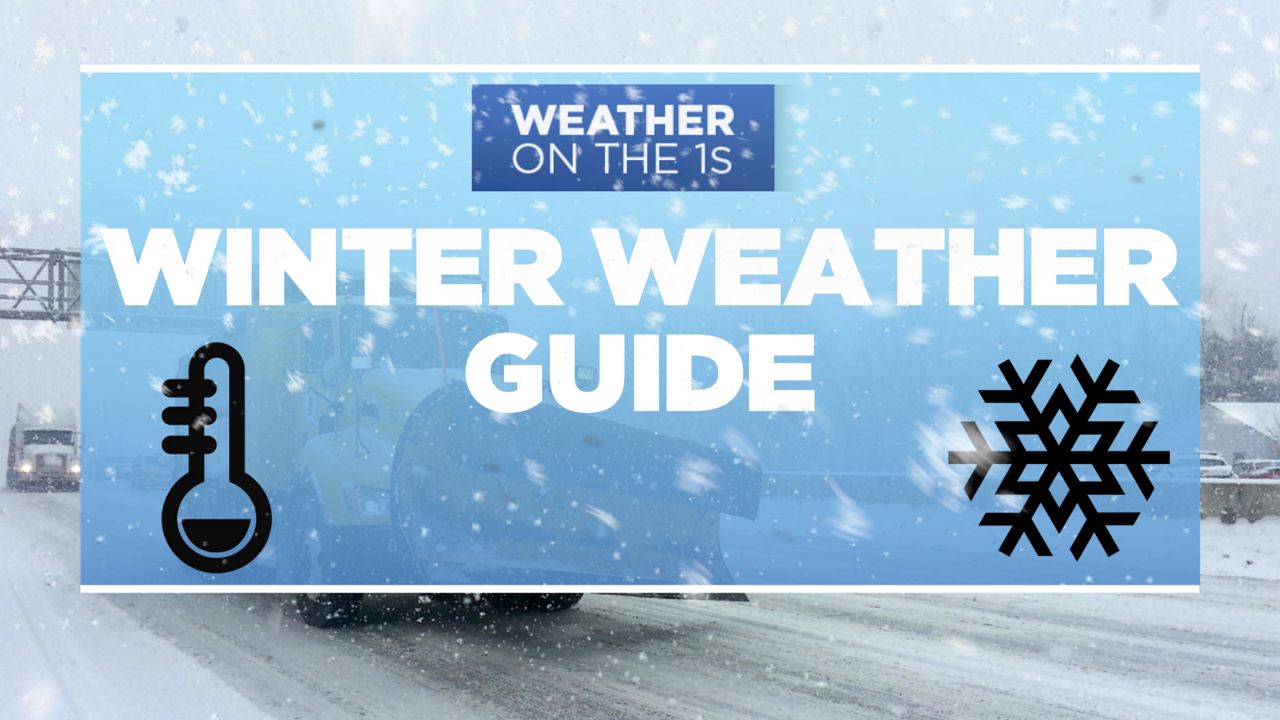Thanks for checking out our Winter Weather Guide here on SpectrumNews1.com. Hopefully, you can find some useful tips and information as we go through another winter in Wisconsin!
As always, for the latest and most up-to-date weather information, turn to Weather On The 1s on your TV, or live-streaming on our app. You can also get the latest video forecast in our Weather section of the site.
Let’s start with the basics when it comes to winter weather.
WINTER WEATHER OVERVIEW
Did you know there are different types of severe weather in the winter months? Just like tornadoes, flooding and lightning in the spring months, the winter brings its own threats and hazards.
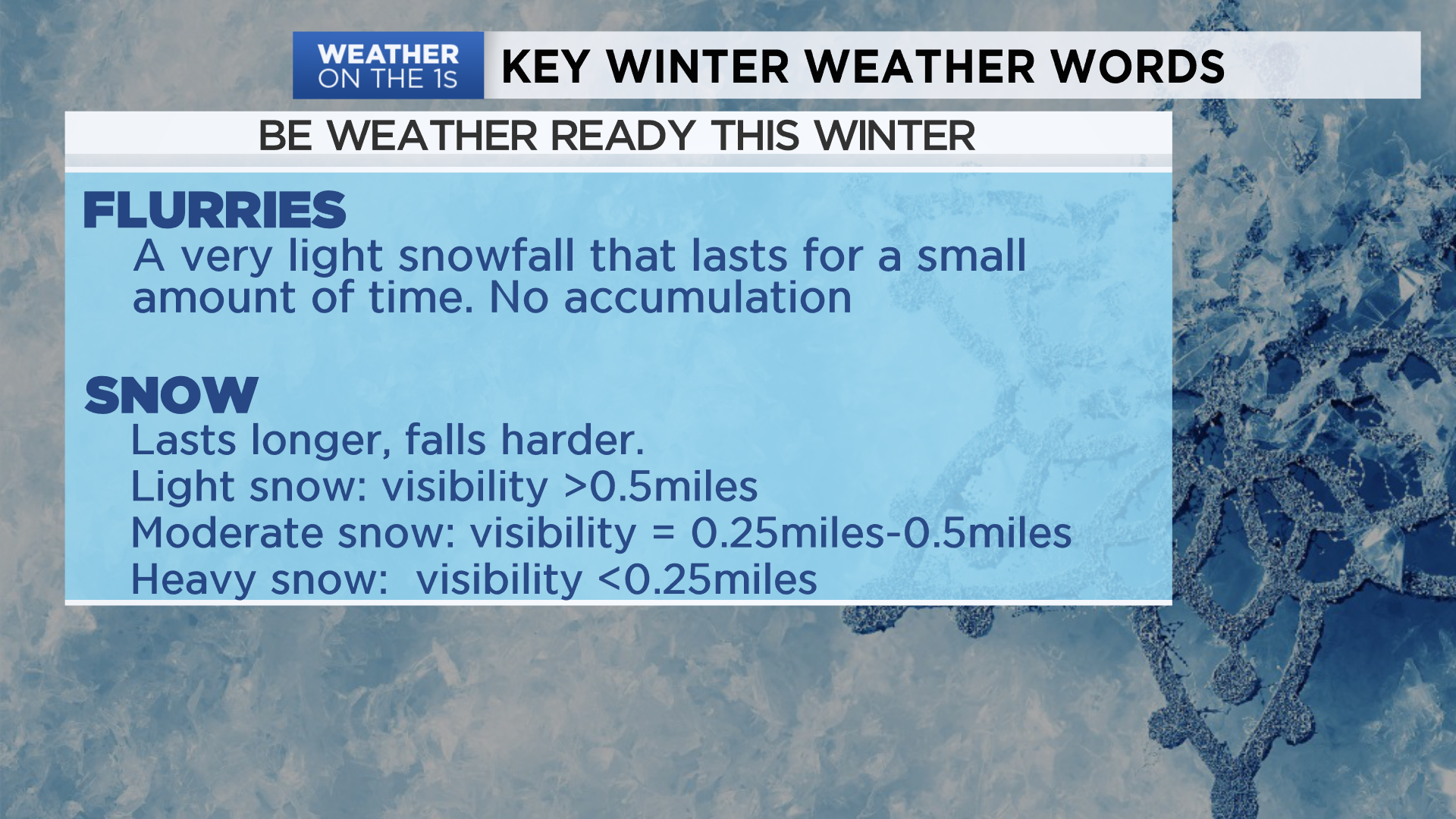
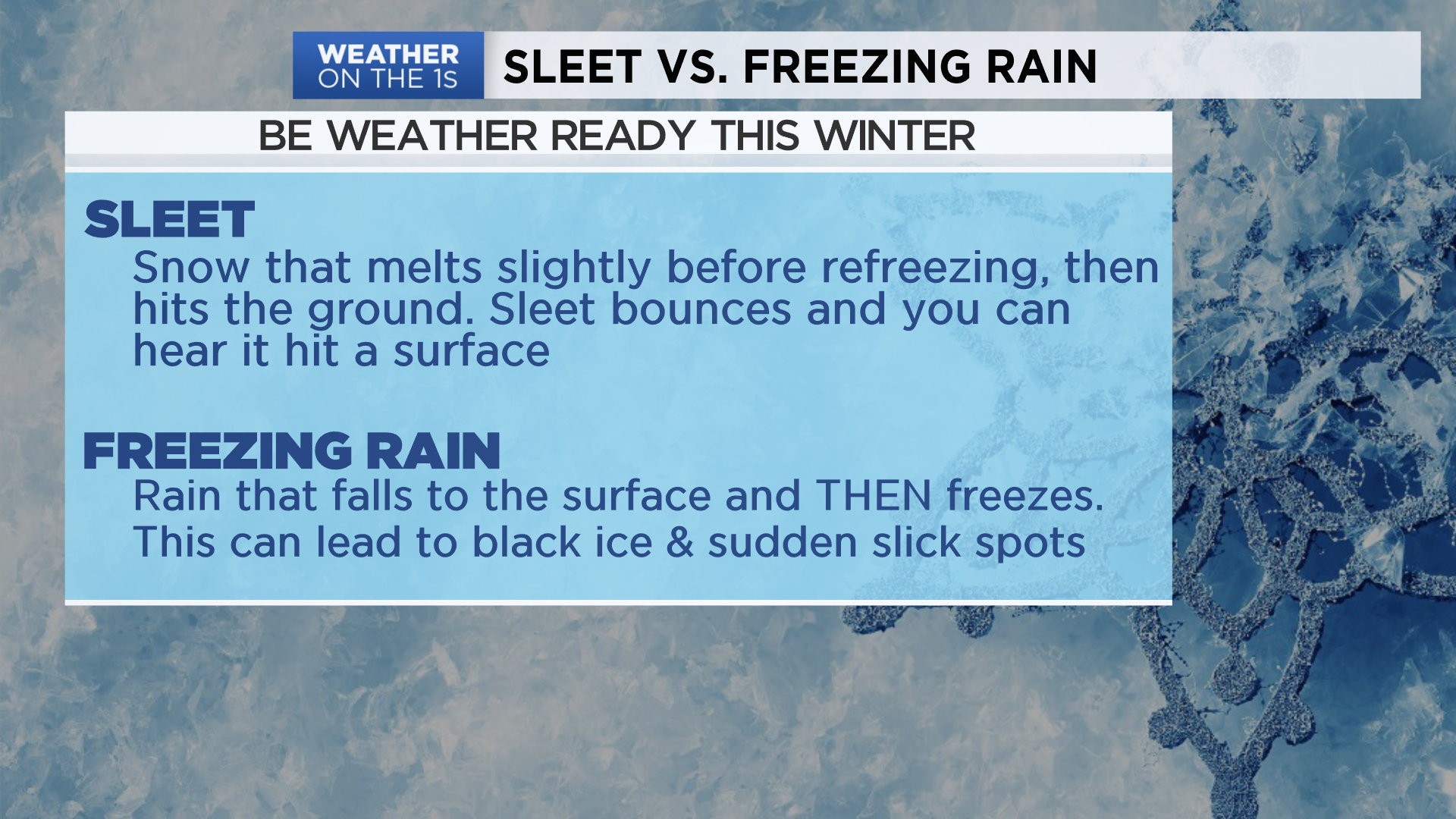
WINTER WEATHER ALERTS
During times of impactful winter weather, the National Weather Service will issue various alerts in order to help you prepare and plan. It is our job to pass along these alerts. But what does each one mean? Here's a helpful guide:
WINTER STORM WATCH - Severe winter weather has the potential to occur. This could be events such as blizzard conditions, heavy snow, freezing rain and/or sleet.
WINTER WEATHER ADVISORY - Advisories are more urgent than a "watch," but still not as urgent as a "warning." Advisories are often issued right before an event is about to occur.
WIND CHILL ADVISORY - Wind chill values expected to reach -25° to -10° for an extended period of time.
WIND CHILL WARNING - Issued when wind chill values below -25° are expected for an extended period of time. Frostbite can occur within 30 minutes under these conditions.
BLIZZARD WATCH - Typically issued a day or two before an expected blizzard. This means conditions would eventually deteriorate and an actual blizzard would occur. When a blizzard watch is issued, this would be a good time to make plans and get prepared for incoming winter weather that may leave you sitting in one place for a lengthy period of time.
BLIZZARD WARNING - Issued when blizzard conditions are expected in the next 24 hours. This would be your final chance to make plans in preparation for the storm. Have survival kits stocked and ready just in case.
Remember that a WARNING is worse (higher level threat) than a WATCH.
And with *all* of that said... here is a quick, easy way to remember the difference between a watch and a warning:
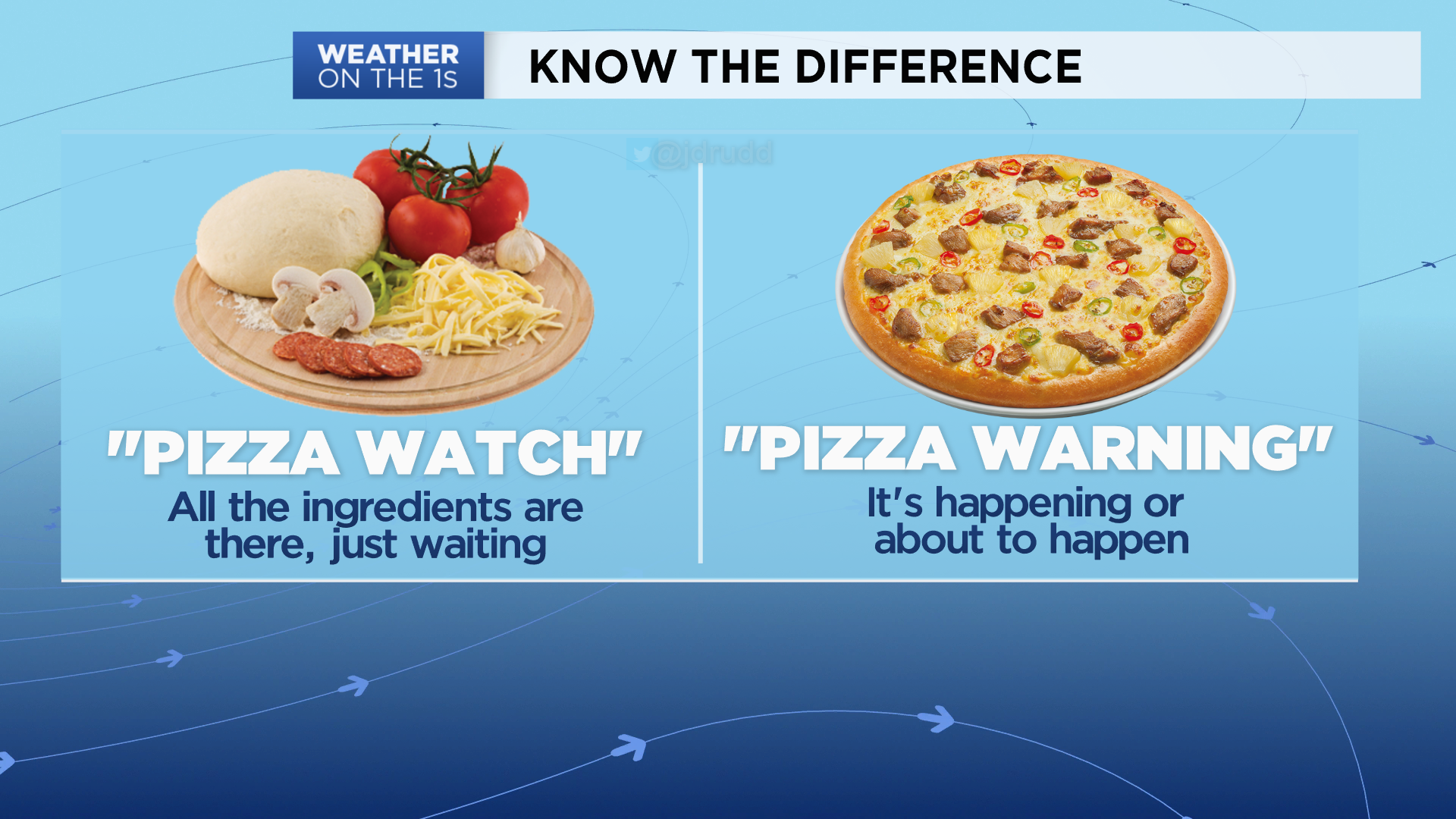
Now that you know the terms and know the types of alerts that can be issued, how do you make sure you're prepared? Here are a few tips:
WHEN AT HOME
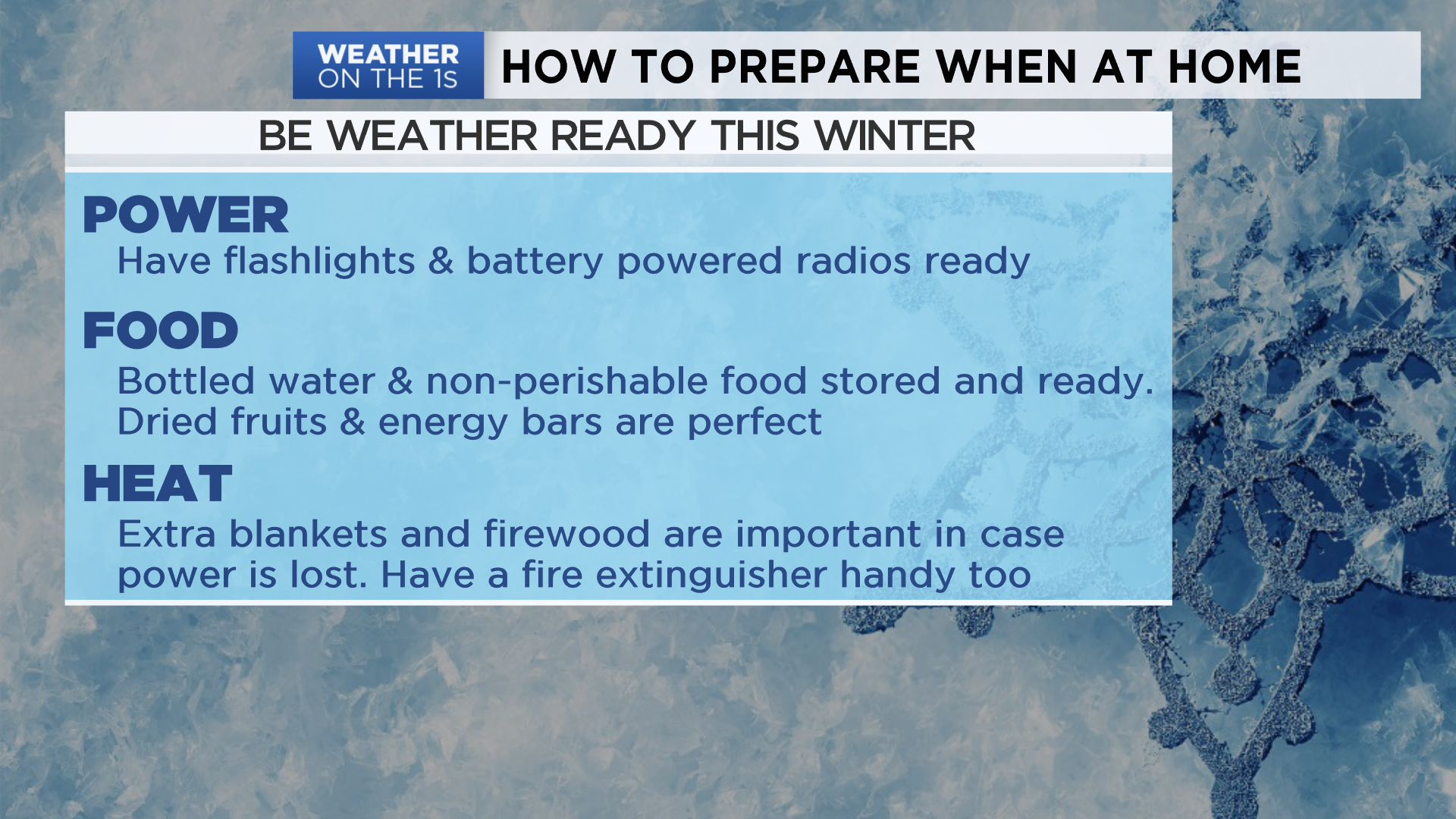
WHAT ABOUT WHEN YOU ARE AT WORK
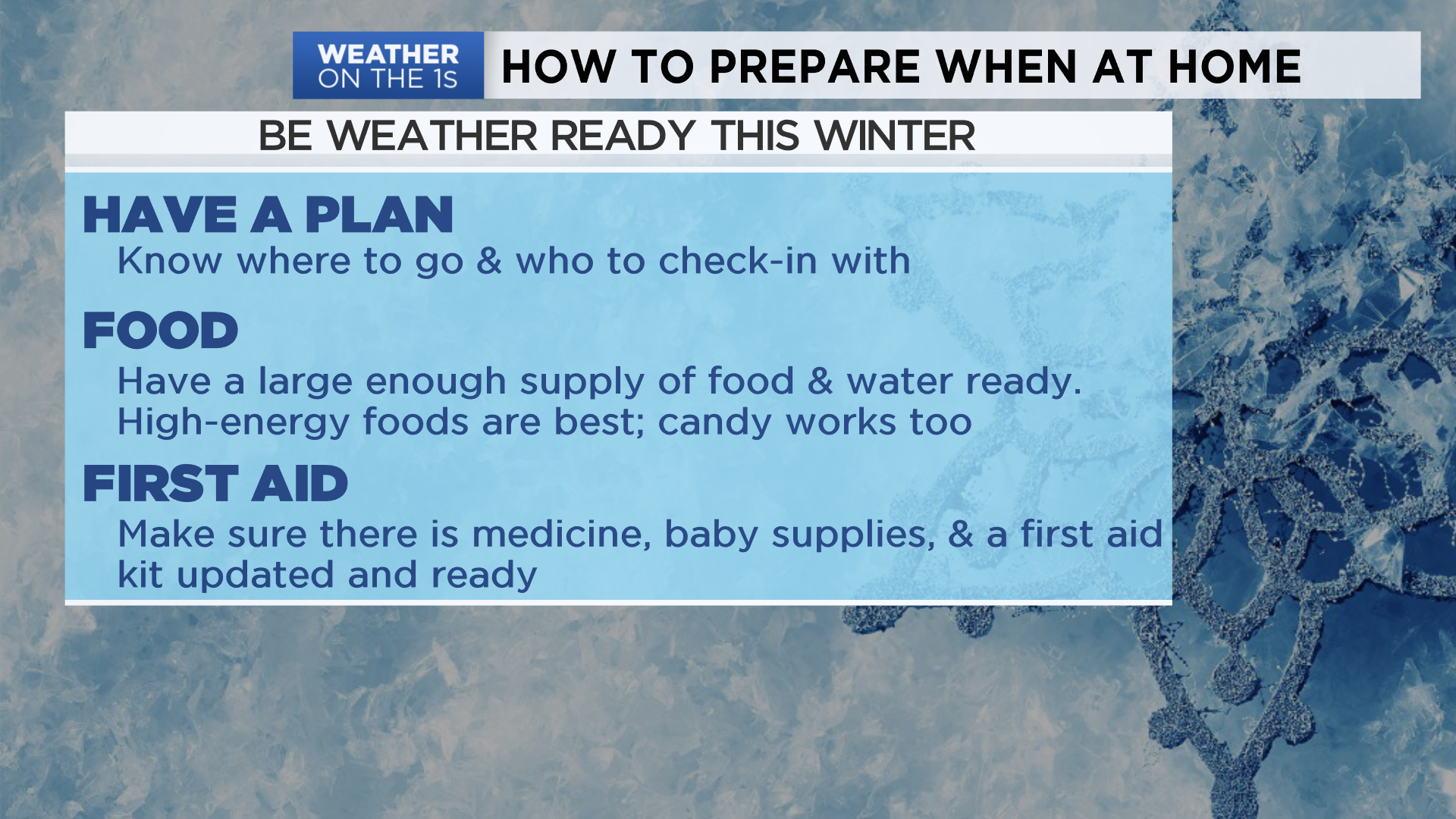
WHEN YOU ARE TRAVELING
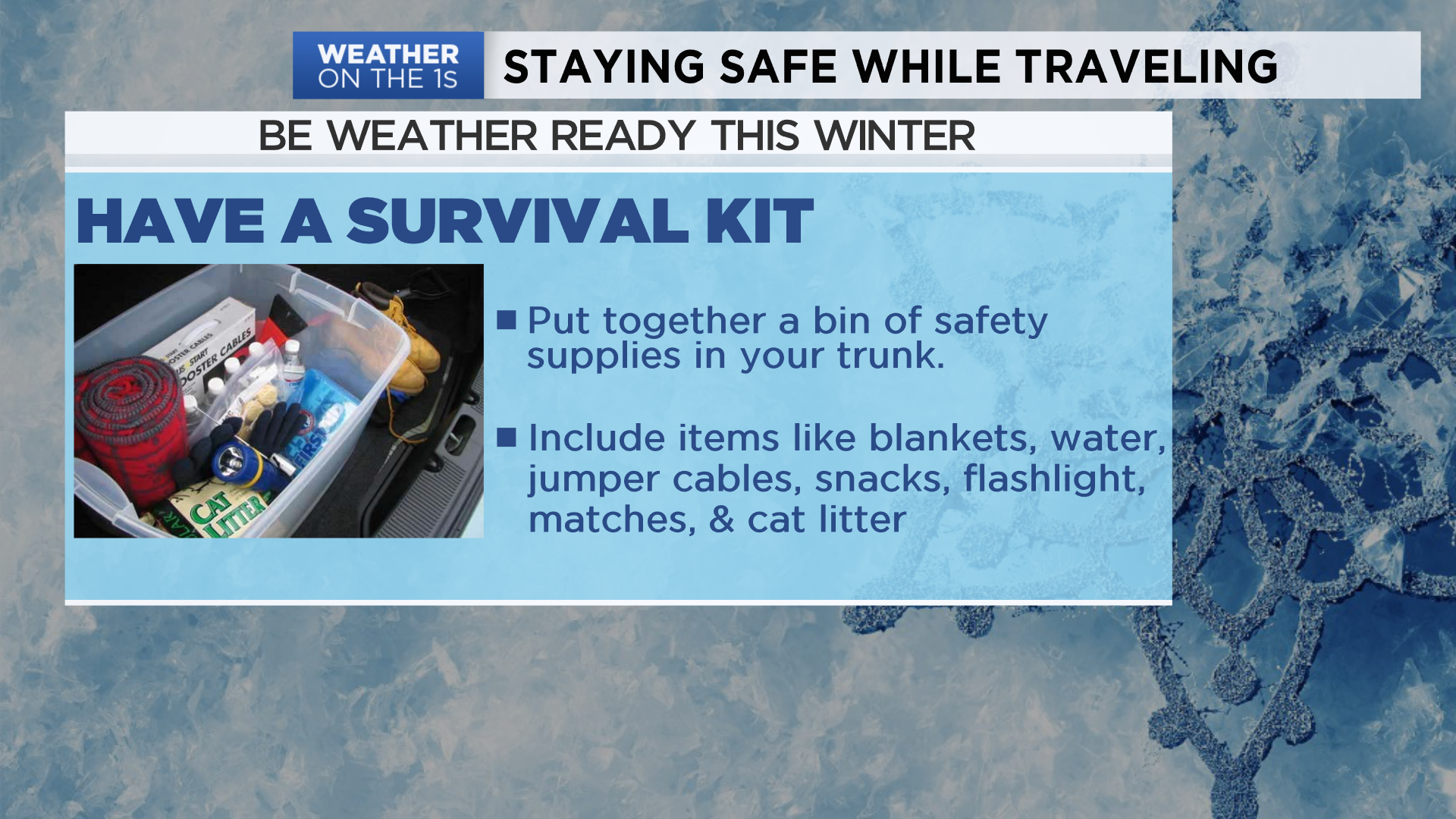
It's also good to remember that cell phones, even without an active service contract, are still able to dial 9-1-1. If you have an old phone in your home, collecting dust, it may not be a bad idea to keep the battery charged and then store that phone in your vehicle's glove box.
KEEP YOUR PETS SAFE IN THE WINTER WEATHER
Animals don't like the cold either! If possible, bring your pets indoors. Even something as simple as a garage or barn is better than the harsh elements. If you have an outside dog, make sure they have a doghouse with ample insulation inside. Avoid using metal dishes for food and water outside. Not only can the water freeze, but (like us) they can get their tongues stuck to the bowl. Inspect the paws of your pet if they go in and out. Ice-melt & salt can freeze between their toes leading to pain and irritation. For smaller dogs, a sweater is a great way to keep your pet warm even if inside. Remember that cold air sinks and since they live closer to the floor, it's often colder than you think for them.
WIND CHILL CHART
This is the official chart of wind chills from the National Weather Service. Feel free to save this image to your computer or phone and have it handy when extreme cold hits. This will give you a good idea of how soon frostbite may set in on your exposed skin.
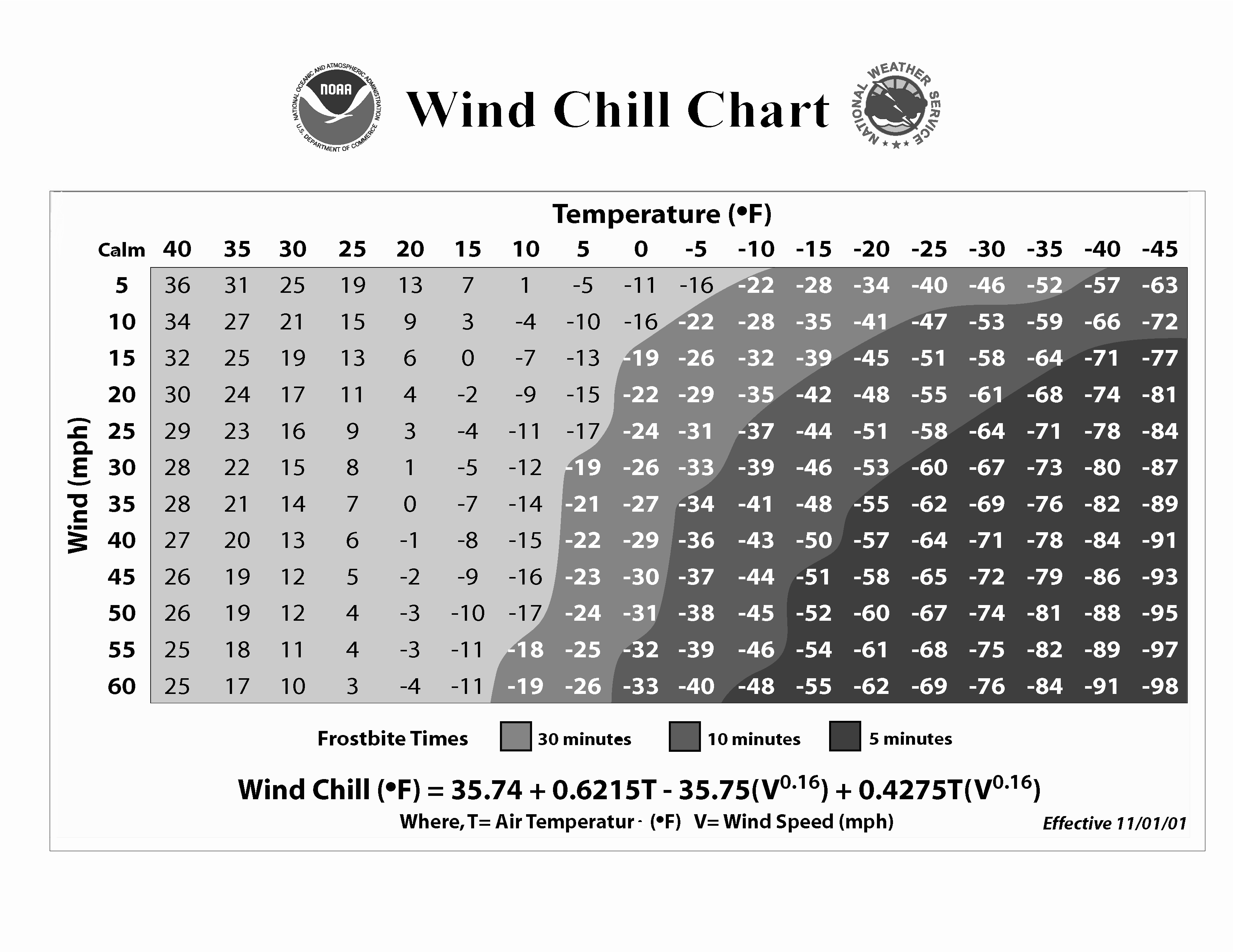
FROSTBITE
In Wisconsin, the wind can turn pretty mean in a hurry. Once we get wind chill values of 40 below, your are in high danger of frostbite. It doesn't take long to cause damage to your exposed skin
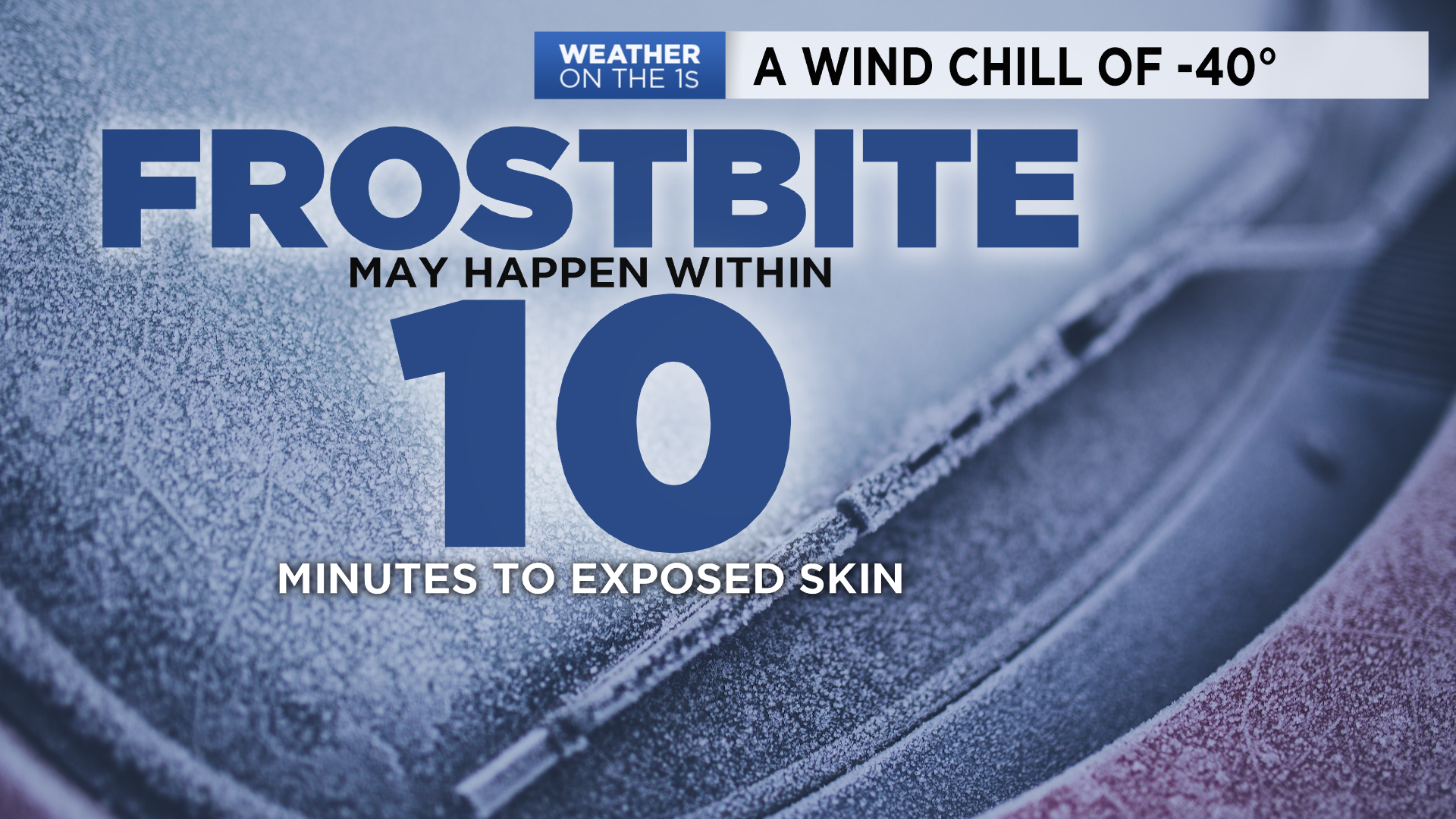
FINAL THOUGHTS
We hope this guide helps you feel better prepared for the winter. Remember to stick with Spectrum News 1 and our weather team as we keep you safe, informed, and prepared this winter.
Questions?
JD Rudd can be reached at jd.rudd[at[charter.com
or find him on Twitter (@jdrudd) & on Facebook (fb.com/jdruddwx)



